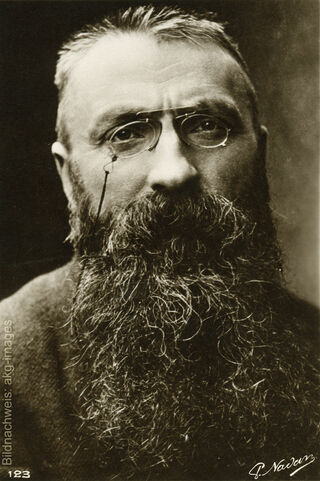Sculpture "Baigneuse" (1880), bonded bronze version
Sculpture "Baigneuse" (1880), bonded bronze version
Quick info
museum replica | bonded bronze | handmade | height 45 cm | weight approx. 7.5 kg
Detailed description
Sculpture "Baigneuse" (1880), bonded bronze version
Just like "The Kiss" or "The Thinker", this sculpture is a study of Rodin's legendary monumental work "The Gates of Hell", which he never completed. It exemplifies the genius of Rodin's unique surfaces.
Original: Bronze, Musée Faure, Aix-les-Bains. Painted in 1880.
ars mundi museum replica cast by hand as a polymer cast with bronzed surface. Height 45 cm, weight approx. 7.5 kg.

About Auguste Rodin
1840-1917 - the most important sculptor of the transitional period between the 19th to the 20th-century.
François-Auguste-René Rodin is considered a brilliant innovator of sculpture and ranks alongside Praxiteles, Michelangelo, Cellini and Canova as one of the greatest sculptors of all time. His sculptural oeuvre is so extensive that no complete catalogue of his works has yet appeared. It would certainly cover several hundred pages.
Because he had been rejected three times by the Paris School of Art, Rodin studied at the School of Applied Arts.
Rodin was an ardent admirer of beauty. He was mesmerised by the human body, which he immortalised again and again in his "vérité fugitive", the fleeting moment: lively, vibrant beauty that took shape under his creative hands. Whatever Rodin created with his hands radiated tremendous vitality and untamed power.
His sculptures, with their multiply broken surfaces, ushered in a new era of sculpture. His sculptures, with their multiply broken surfaces, ushered in a new era in sculpture. The genius of Rodin's modern stylistic idiom, which was expressed using elements of Impressionism, abandoned the monument-like pose of the academic sculpture and brought emotional states in dynamic surfaces to life, had yet to be recognised. "Boldness of light - modesty of the shadow" - Rodin composed a dialogue of rises and falls onto the "skin" of his sculptures. Flickering highlights and mysterious shadows animate his figures and bring them to life: "Sculpture is the art of representing forms through the shift of light and shadow."
The style of Impressionism, which emerged in French painting around 1870, owes its name to Claude Monet's landscape 'Impression, Soleil Levant'. After initial rejection, it began a veritable triumphal procession.
Painters such as Claude Monet, Edgar Degas, Edouard Manet, Auguste Renoir and others created motifs from everyday life, urban and landscape scenes in bright, natural light.
Impressionism can be seen as a reaction to academic painting. The emphasis was not on content with its strict rules of painting structure, but on the object as it appears at any given moment, in an often random cut out. The reality was seen in all its variety of colours in natural lighting. The Studio painting was replaced by open-air painting.
Through the brightening of the palette and the dissolution of firm contours, a new approach to colour emerged. In many cases, the colours were no longer mixed on the palette but side by side on the canvas so that the final impression lies in the eye of the viewer with a certain distance. In "Pointillism", (with painters such as Georges Seurat or Paul Signac) this principle was taken to the extreme.
Outside France, Impressionism was taken up by painters such as Max Slevogt, Max Liebermann and Lovis Corinth in Germany, and by James A. M. Whistler in the United States.
However, Impressionism was only expressed to a limited extent in the art of sculpture. In the works of Auguste Rodin, who is considered one of the main representatives, a dissolution of surfaces is evident, in which the play of light and shadow is included in the artistic expression. Degas and Renoir created sculptures as well.
Bronze powder is polymer-bonded. Special polishing and patination techniques give the surface of the casting an appearance similar to the bronze.
A true-to-the-original reproduction of an artwork in the same size and with the best possible material and colour uniformity.
The mould is usually taken directly from the original so that the replication reproduces even the finest details. After casting the replication, using the most appropriate method, the surface is polished, patinated, gilded or painted according to the original.
A replication of ars mundi is a recognizable copy of the original.
A plastic work of sculptural art made of wood, stone, ivory, bronze or other metals.
While sculptures from wood, ivory or stone are made directly from the block of material, in bronze casting a working model is prepared at first. Usually, it is made of clay or other easily mouldable materials.
The prime time of sculpture after the Greek and Roman antiquity was the Renaissance. Impressionism gave a new impulse to the sculptural arts. Contemporary artists such as Jorg Immendorf, Andora, and Markus Lupertz also enriched sculptures with outstanding works.


